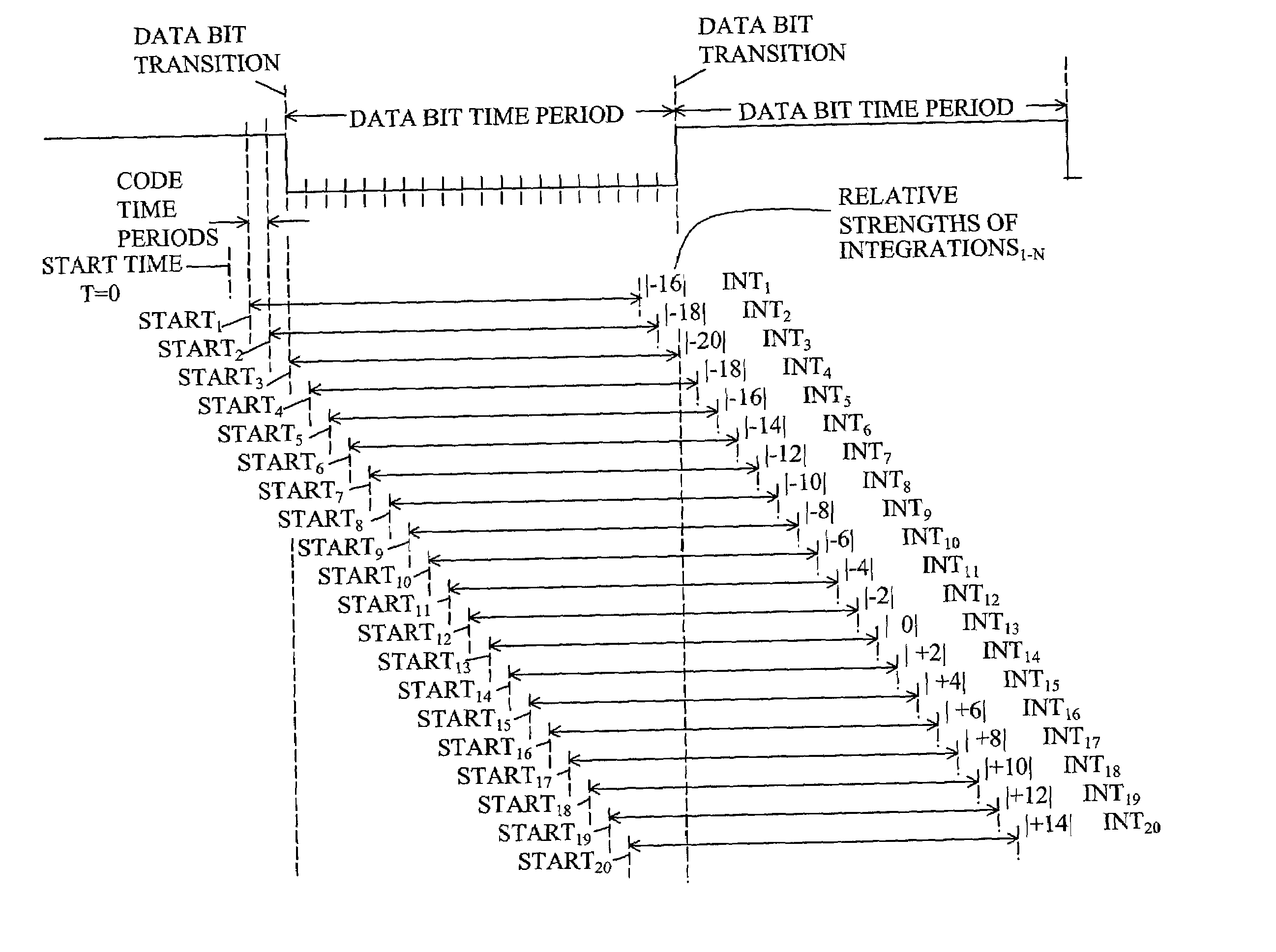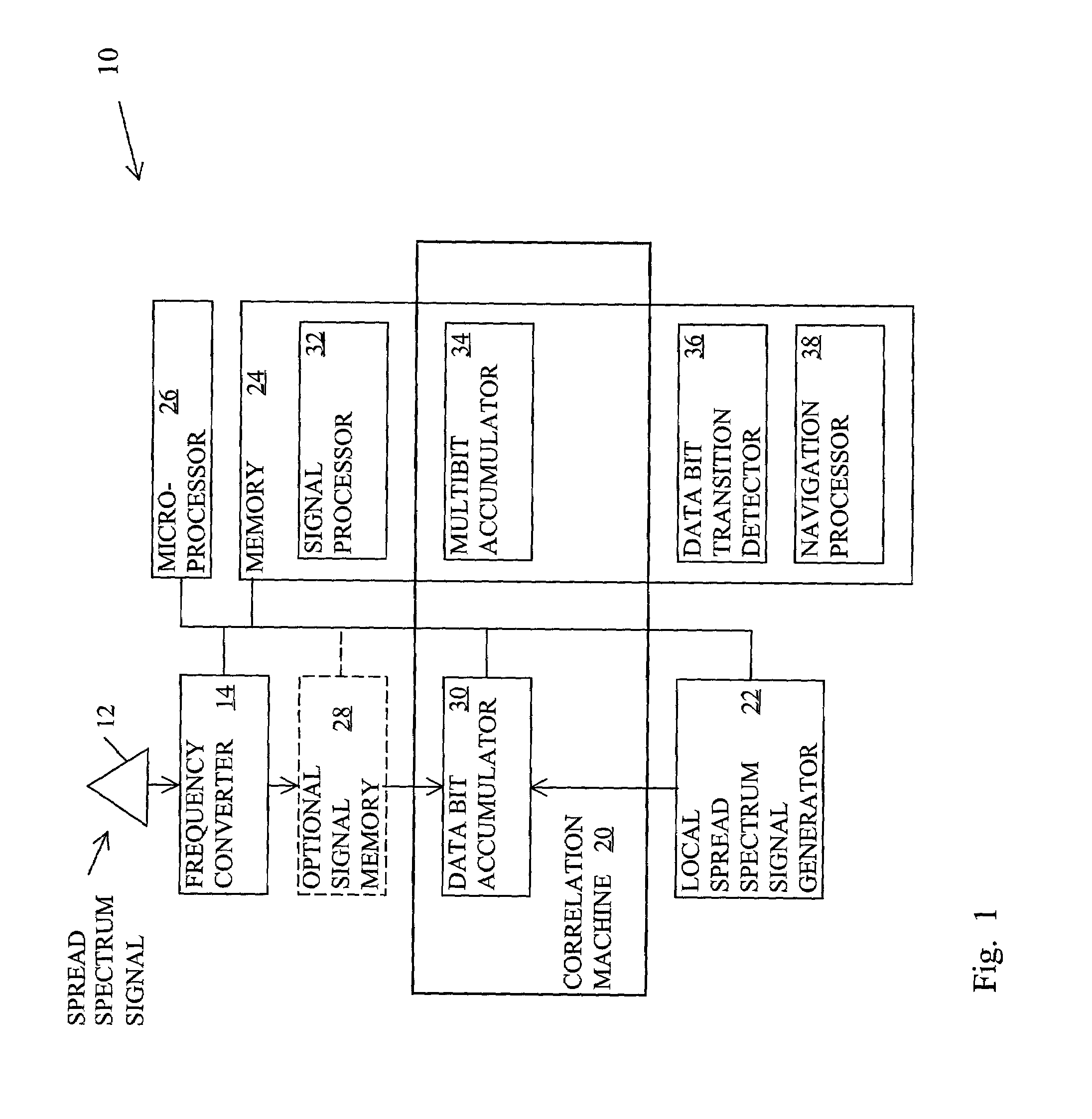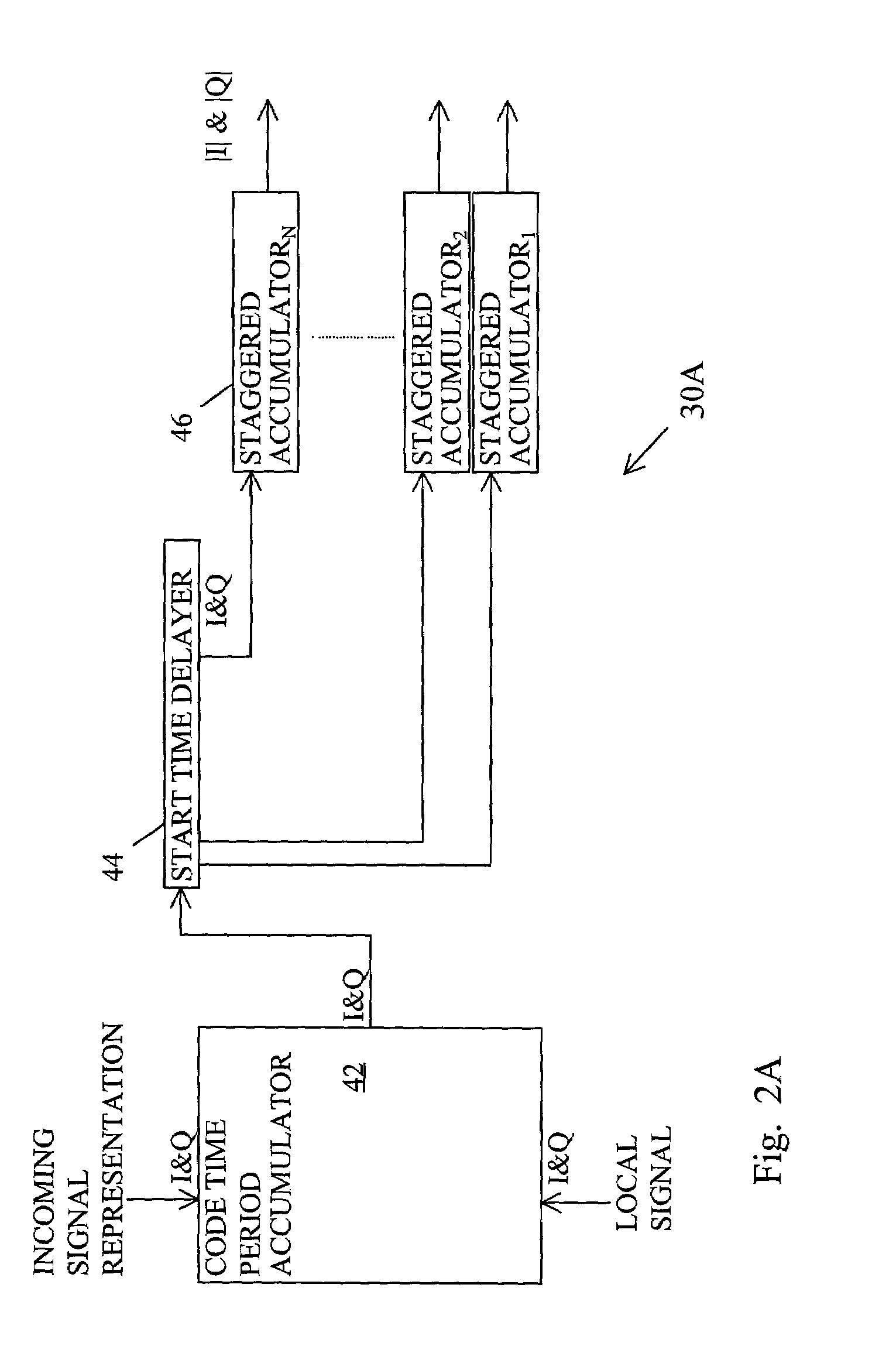Method for determining data bit transitions for a low level spread spectrum signal
a technology of spread spectrum and data bit transition, which is applied in the direction of transmission, electrical equipment, etc., can solve the problems of difficult use of gps indoors and limited use of global positioning system in several potential applications
- Summary
- Abstract
- Description
- Claims
- Application Information
AI Technical Summary
Benefits of technology
Problems solved by technology
Method used
Image
Examples
Embodiment Construction
[0021]FIG. 1 illustrates a block diagram of a spread spectrum signal receiver of the present invention referred to by a general reference number 10 for receiving an incoming spread spectrum signal. The spread spectrum signal has a carrier frequency modulated by data bits that are modulated by a spreading code that repeats several times for each data bit. As described below, the receiver 10 is adapted for receiving the coarse / acquisition (C / )A code GPS signal. However, it will be apparent to those skilled in the art that the present invention can be applied for receiving other direct sequence spread spectrum signals for two way and CDMA radio communication, P or P(Y) code GPS, GLONASS, and the like.
[0022]The receiver 10 includes an antenna 12, a frequency converter 14, a correlation machine 20, a local spread spectrum signal generator 22, a memory 24, and a microprocessor 26. The antenna 12 receives the incoming spread spectrum signal and converts the signal from an airwave to a cond...
PUM
 Login to View More
Login to View More Abstract
Description
Claims
Application Information
 Login to View More
Login to View More - R&D
- Intellectual Property
- Life Sciences
- Materials
- Tech Scout
- Unparalleled Data Quality
- Higher Quality Content
- 60% Fewer Hallucinations
Browse by: Latest US Patents, China's latest patents, Technical Efficacy Thesaurus, Application Domain, Technology Topic, Popular Technical Reports.
© 2025 PatSnap. All rights reserved.Legal|Privacy policy|Modern Slavery Act Transparency Statement|Sitemap|About US| Contact US: help@patsnap.com



